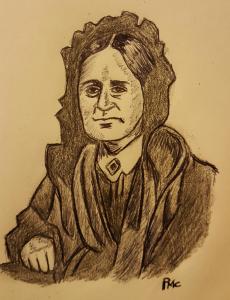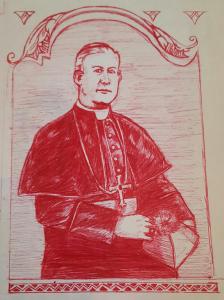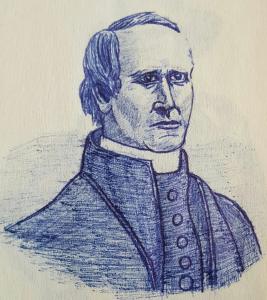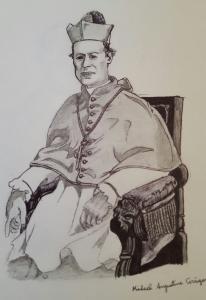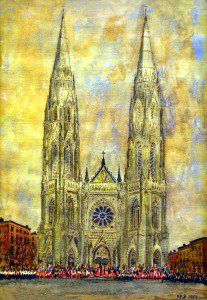
The Great Memorial Church to Bishop Loughlin. The Brooklyn Eagle, April 29, 1894
Bishop McDonnell’s recommendation at the meeting of the Catholic Historical Society, last Wednesday evening, that the new cathedral should be finished at once as a monument to the late Bishop Loughlin, has met with general popular approval. The building was designed by Mr. Patrick Keely, the architect of so many splendid temples all over the country. He still resides at 257 Clermont avenue, and is about the only one living of the leading participants in the ceremony of the laying of the cornerstone, which took place on Sunday, June 17, 1868. The ground was purchased in 1860 for $75,200. Mr. Keely’s idea was a French Gothic church, pointing on Lafayette avenue, running back 354 feet with a breadth of 180 feet. The front was to be 160 feet wide, two towers flanking the entrance and standing at angles with the front line and Lafayette avenue. Their bases are each 50 feet square, and they will rise 350 feet to the top of the crosses which will stand on the tapering spires. The west tower was intended to hold a clock and a bell. In the east tower there was to have been a chime of bells. Stair turrets afforded an ascent of 245 feet in either tower. Two other towers were to stand at the transept, 27 feet square at the base and 185 feet high. The roof was to be 112 feet above the street and formed of oak beams covered with slate. The walls on which it rested were to be 57 feet high. The nave and transept ceiling were to be 85 feet high and the aisle ceiling 56 feet. The nave was to terminate in an apse of five sides. The sanctuary was to be 54 feet deep and 85 feet wide. At either side are entrances to St. John’s chapel, on Clermont avenue, and to the vestry on the Vanderbilt avenue side. St. John’s chapel was finished and dedicated on December 8, 1878. It is the only part of the great structure that has so far evolved out of the chaos of the past twenty odd years. It is the parish church for the Catholics of the neighborhood and is now much too small for their needs. It is uncomfortably crowded at all the Masses on Sunday and there does nto seem to be any practical way of enlarging its capacity. Expert engineers have assured Bishop McDonnell that the masonry of the unfinished part of the cathedral is in good condition.


